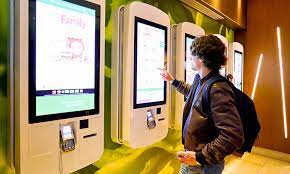As the United States, and the world as a whole, closes in on nearly an entire year of combatting COVID-19, individuals, businesses, organizations, and government entities alike have all faced, and continue to face, their own unique challenges and setbacks. While some industries have been more negatively impacted than others—namely the travel, hospitality, and food service industries, to name a few—the United States federal government has established a more than $2 trillion fund to provide emergency assistance for individuals, families, small businesses, and government entities affected by the pandemic as a whole.
Commonly referred to as the CARES Act, an acronym for Coronavirus Aid, Relief, and Economic Security Act, the policy was designed to provide fast and direct economic assistance. In its earliest stages, the CARES Act provided individual payments of $1,200 to adults whose individual income was less than $99,000 with an additional $500 available per child. Many small businesses also received funding in the form of Paycheck Protection Program (PPP) loans which made up $659 billion of the fund. State, local, and tribal government entities, on the other hand, were allotted funds from the $150 billion Coronavirus Relief Fund.
While the CARES Act funding certainly provided a lifeline during the period in which the most stringent COVID-19 restrictions were in place, the larger question continues to loom—how can these funds be used to not only sustain our businesses and organizations in the short-term, but also to get back to work, business, and school safely?
While there’s no one definitive answer as to how we return to our new normal in a safe and efficient manner, many businesses and organizations have utilized CARES Act funding to promote health and safety in their facilities in the form of temperature screening kiosks.
Why Temperature Screening Kiosks?
While COVID-19 tests are certainly more readily available now than they were at the beginning of the pandemic, the ability to test individuals on a daily basis would still be extremely cost prohibitive, especially in places like schools where funding is already limited in many cases. Thus, many businesses and organizations have turned to temperature screening kiosks as both a precautionary measure and a deterrent to anyone who may be feeling unwell. With a fever being one of the most widely recognized and easily detectable potential symptoms of sicknesses of all kinds, most are requiring daily temperature checks of employees, visitors, and students, alike.
Making the Investment
Since it is certainly not likely that temperature screening kiosks were a part of an organization’s annual budget plans for 2020, many businesses, organizations, and government entities have utilized money afforded to them through the CARES Act to make the investment in such technology. While temperature screening kiosks are a larger upfront investment than their handheld counterparts, they’re also a completely unattended solution and do not require an employee to monitor and operate them. Bearing these factors in mind, it’s clear that the investment in temperature screening kiosks is somewhat nominal in the long-run.
Future Outlook and Applications
While no one can adequately predict just how long the COVID-19 pandemic will loom, the benefits of investing in temperature screening kiosks extend far beyond the pandemic itself. Due to the flexible nature of the temperature screening solution, the kiosk can be used to screen temperatures of users during seasonal cold and flu seasons or for facial recognition purposes—easily identifying admitted personnel and visitors as well as guests or strangers.
Although the current landscape is still uncertain, and constantly changing, the investment in temperature screening kiosks has enabled numerous businesses, organizations, schools, and medical offices to welcome their employees, customers, students, and patients back safely.

